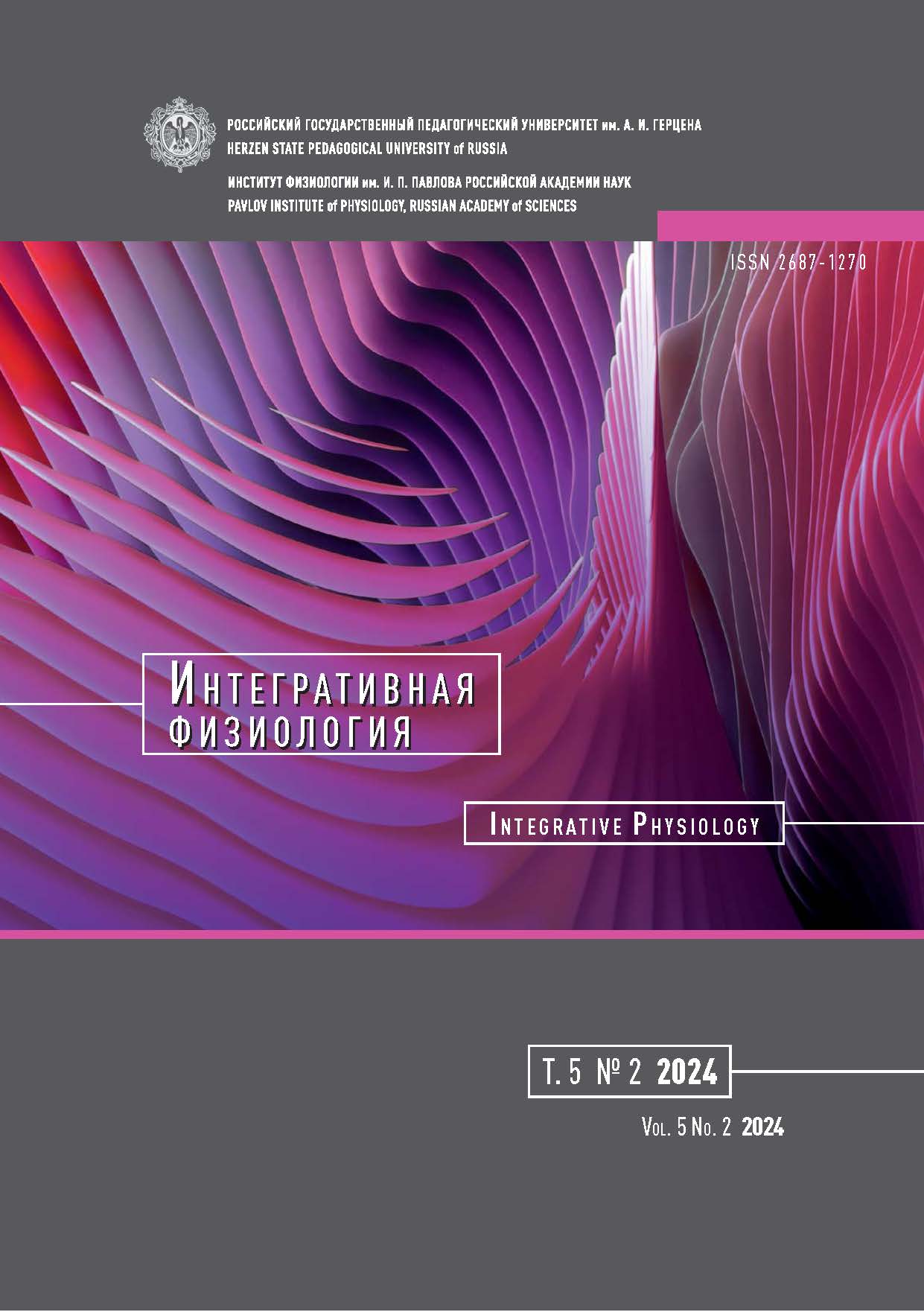Vertical stance in ‘no-hat’ vs. ‘in-a-hat’ conditions in subjects with bilateral vestibular hypofunction: Probable inference of the egocentric vertical
DOI:
https://doi.org/10.33910/2687-1270-2024-5-2-177-185Keywords:
bilateral vestibular hypofunction, stabilometry, body balance, headwear, egocentric reference, Romberg’s testAbstract
During a clinical otoneurological examination, a 66-year-old male subject (S1) with bilateral vestibular hypofunction (BVH) reported that he could walk confident and drive his car only while wearing his ‘favorite’ hat. To obtain evidence in support of his claim, we conducted a stabilometric analysis on the subject S1, a group of other BVH patients (n = 9), and a group of healthy young subjects (n = 23, aged 20–21, HY) under four standing conditions: (1) eyes open on a solid surface (EOS), (2) eyes closed on a solid surface (ECS), (3) eyes open on foam rubber (EOF), and (4) eyes closed on foam rubber (ECF). The subjects were also tested in two headwear conditions: (1) ‘in-a-hat’ and (2) ‘no-hat’. Our findings revealed that under challenging conditions (EOF, ECF), the length and ellipse area of the center of pressure (CoP) trajectory were significantly reduced when the subject wore a hat. This effect was not observed under simpler conditions (EOS, ECS). In the ‘in-a-hat’ condition, both BVH and HY subjects exhibited shorter CoP trajectory lengths in EOF and ECF conditions (p < 0.05). Additionally, the CoP ellipse area decreased in the BVH group. These results suggest that the phenomenon of improved stance with a hat may be linked to the emergence of an egocentric (somatosensory) vertical reference axis between the head and feet.
References
Anastasopoulos, D., Bronstein, A., Haslwanter, T. et al. (1999) The role of somatosensory input for the perception of verticality. Annals of the New York Academy of Sciences, vol. 871, no. 1, pp. 379–383. https://doi.org/10.1111/j.1749-6632.1999.tb09199.x (In English)
Bury, N., Bock, O. (2018) The habitual motor vertical of humans depends on gravicentric and egocentric cues, but only little on visual cues. Experimental Brain Research, vol. 236, no. 10, pp. 2545–2552. https://doi.org/10.1007/s00221-018-5316-1 (In English)
Clément, G., Arnesen, T. N., Olsen, M. H., Sylvestre, B. (2007) Perception of longitudinal body axis in microgravity during parabolic flight. Neuroscience Letters, vol. 413, no. 2, pp. 150–153. https://doi.org/10.1016/j.neulet.2006.11.047 (In English)
D’Angelo, M., di Pellegrino, G., Seriani, S. et al. (2018) The sense of agency shapes body schema and peripersonal space. Scientific Reports, vol. 8, no. 1, article 13847. https://doi.org/10.1038/s41598-018-32238-z (In English)
Delle Monache, S., Paolocci, G., Scalici, F. et al. (2023) Interception of vertically approaching objects: Temporal recruitment of the internal model of gravity and contribution of optical information. Frontiers in Physiology, vol. 14, article 1266332. https://doi.org/10.3389/fphys.2023.1266332 (In English)
Feller, K. J., Peterka, R. J., Horak, F. B. (2019) Sensory re-weighting for postural control in Parkinson’s disease. Frontiers in Human Neurosciences, vol. 13, article 126. https://doi.org/10.3389/fnhum.2019.00126 (In English)
Foisy, A., Kapoula, Z. (2018) Plantar cutaneous afferents influence the perception of subjective visual vertical in quiet stance. Scientific Reports, vol. 8, no. 1, article 14939. https://doi.org/10.1038/s41598-018-33268-3 (In English)
Forbes, P. A., Chen, A., Blouin, J. S. (2018) Sensorimotor control of standing balance. Handbook of Clinical Neurology, vol. 159, pp. 61–83. https://doi.org/10.1016/B978-0-444-63916-5.00004-5 (In English)
Fraser, L. E., Makooie, B., Harris, L. R. (2015) The subjective visual vertical and the subjective haptic vertical access different gravity estimates. PLoS One, vol. 10, no. 12, article e0145528. https://doi.org/10.1371/journal.pone.0145528 (In English)
Grill, E., Heuberger, M., Strobl, R. et al. (2018) Prevalence, determinants, and consequences of vestibular hypofunction. Results from the KORA-FF4 Survey. Frontiers in Neurology, vol. 9, article 1076. https://doi.org/10.3389/fneur.2018.01076 (In English)
Gurfinkel, V. S., Lestienne, F., Levik, Yu. S., Popov, K. E. (1993) Egocentric references and human spatial orientation in microgravity. I. Perception of complex tactile stimuli. Experimental Brain Research, vol. 95, no. 2, pp. 339–342. https://doi.org/10.1007/BF00229791 (In English)
Hemm, S., Baumann, D., Duarte da Costa, V., Tarnutzer, A. A. (2023) Test-re-test reliability and dynamics of the Fukuda-Unterberger stepping test. Frontiers in Neurology, vol. 14, article 1128760. https://doi.org/10.3389/fneur.2023.1128760 (In English)
Holmes, N. P., Spence, C. (2004) The body schema and the multisensory representation(s) of peripersonal space. Cognitive Processing, vol. 5, no. 2, pp. 94–105. https://doi.org/10.1007/s10339-004-0013-3 (In English)
Jaime, M., Longard, J., Moore, C. (2014) Developmental changes in the visual-proprioceptive integration threshold of children. Journal of Experimental Child Psychology, vol. 125, pp. 1–12. https://doi.org/10.1016/j.jecp.2013.11.004 (In English)
Levik, Y. S. (2021) Motor control based on the internal representation system on the earth and in space. Human Physiology, vol. 47, no. 3, pp. 335–351. https://doi.org/10.1134/S0362119721030099 (In English)
Lopez, C., Lacour, M., Ahmadi, A. E. et al. (2007) Changes of visual vertical perception: a long-term sign of unilateral and bilateral vestibular loss. Neuropsychologia, vol. 45, no. 9, pp. 2025–2037. https://doi.org/10.1016/j.neuropsychologia.2007.02.004 (In English)
Meigal, A. Y., Kravtsova, E. N., Gerasimova-Meigal, L. I. et al. (2021) Contribution of various sensory inputs to vertical stance and locomotion in humans: robust assessment with stabilography and motion videocapture. In: Proceedings 28th conference of Open Innovations Association FRUCT Association. Russia, Moscow, pp. 286– 292. https://doi.org/10.23919/FRUCT50888.2021.9347603 (In English)
Mittelstaedt, H. (1999). The role of the otoliths in perception of the vertical and in path integration. Annals of the New York Academy of Sciences, vol. 871, no. 1, pp. 334–344. https://doi.org/10.1111/j.1749-6632.1999.tb09196.x (In English)
Moideen, A., Konkimalla, A., Tyagi, A. K. et al. (2023) Cross-Sectional analysis of videonystagmography (VNG) findings in balance disorders. Cureus, vol. 15, no. 2, article e34795. https://doi.org/10.7759/cureus.34795 (In English)
Peterka, R. J. (2002) Sensorimotor integration in human postural control. Journal of Neurophysiology, vol. 88, no. 3, pp. 1097–1118. https://doi.org/10.1152/jn.2002.88.3.1097 (In English)
Rajamani, S. K., Iyer, R. S., Venkatraman, A. (2024) Comparison of Halmágyi–Curthoys head impulse (Thrust) test with Romberg’s test in detection of vestibular hypofunctioning in vertigo patients. Journal of Otorhinolaryngology, Hearing and Balance Medicine, vol. 5, no. 1, article 4. https://doi.org/10.3390/ohbm5010004 (In English)
Smith, P. F. (2018) Vestibular functions and Parkinson’s disease. Frontiers in Neurology, vol. 9, article 1085. https://doi.org/10.3389/fneur.2018.01085 (In English)
Vingerhoets, R. A., De Vrijer, M., Van Gisbergen, J. A., Medendorp, W. P. (2009) Fusion of visual and vestibular tilt cues in the perception of visual vertical. Journal of Neurophysiology, vol. 101, no. 3, pp. 1321–1333. https://doi.org/10.1152/jn.90725.2008 (In English)
Wright, W. G., DiZio, P., Lackner, J. R. (2005) Vertical linear self-motion perception during visual and inertial motion: More than weighted summation of sensory inputs. Journal of Vestibular Research, vol. 15, no. 4, pp. 185–195. (In English)
Yamamoto, S., Yamamoto, M. (2006) Effects of the gravitational vertical on the visual perception of reversible figures. Neuroscience Research, vol. 55, no. 2, pp. 218–221. https://doi.org/10.1016/j.neures.2006.02.014 (In English)
Downloads
Published
Issue
Section
License
Copyright (c) 2025 Elena N. Kravtsova, Alexander Yu. Meigal, Liudmila I. Gerasimova-Meigal, Vladimir V. Dvoryanchikov

This work is licensed under a Creative Commons Attribution-NonCommercial 4.0 International License.
The work is provided under the terms of the Public Offer and of Creative Commons public license Creative Commons Attribution 4.0 International (CC BY 4.0).
This license permits an unlimited number of users to copy and redistribute the material in any medium or format, and to remix, transform, and build upon the material for any purpose, including commercial use.
This license retains copyright for the authors but allows others to freely distribute, use, and adapt the work, on the mandatory condition that appropriate credit is given. Users must provide a correct link to the original publication in our journal, cite the authors' names, and indicate if any changes were made.
Copyright remains with the authors. The CC BY 4.0 license does not transfer rights to third parties but rather grants users prior permission for use, provided the attribution condition is met. Any use of the work will be governed by the terms of this license.







